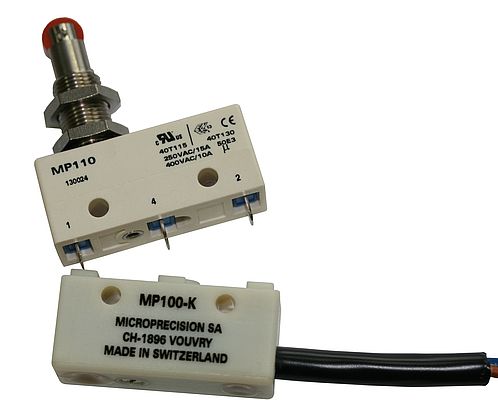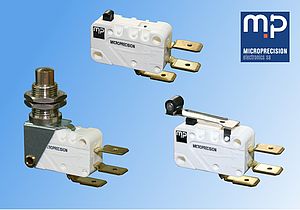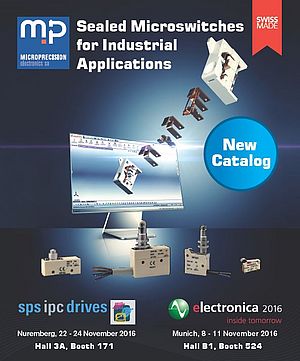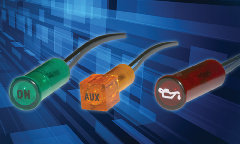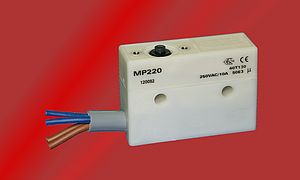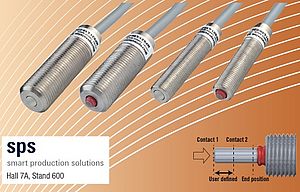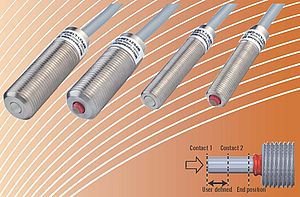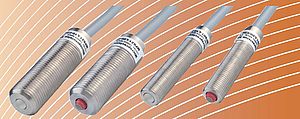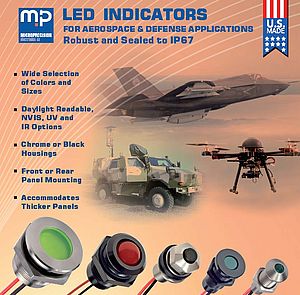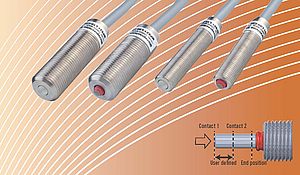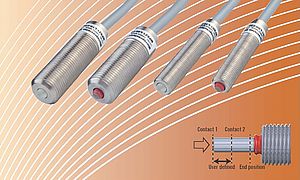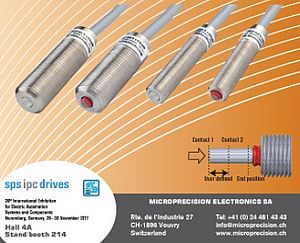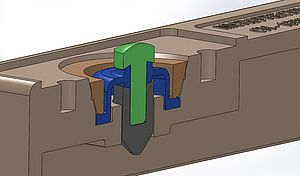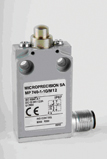Switching electrical power or signals has been a basic function for decades. One of the devices that perform this operation is a snap action based switch, manufactured in very large quantities by multiple manufacturers. The largest market segment in power switching (up to 15 Amps) is for applications with simple requirements, mostly in appliance related applications. A simple micro switch without any specific protection against water, dust or temperature will do the job.
But for industrial applications the requirements become much more challenging. Water and dust proofing become an important consideration. All of a sudden an operating temperature range of - 10°C to 80°C is not sufficient anymore. Switches may be mounted on a machine which heats up when operating and therefore an operating temperature of 100 -120°C may be a needed requirement. Also, it is not uncommon having industrial equipment working outside where temperatures may drop to -40°C and the equipment is still required to operate properly. Guaranteeing a high degree of sealing, while operating under a wide temperature range, demands very good choices in material and switch design.
To achieve a sealing against water or oil a flexible membrane has to seal the space between the moving pin and the housing. Several possibilities exist to hold the seal in place; the technique used determines the quality of the sealing and the applicable temperature. The selection of the rubber material is important as the membrane has to keep its flexibility over the entire operating temperature range. It should not crack or become too hard at low temperatures.
To guarantee a tight seal, Microprecision uses a pin made out of two parts. The membrane is squeezed between the parts and held securely in place. It's attached to the housing using a plastic ring, which compresses the membrane to the housing and held in place through ultrasonic welding. This approach guarantees a tight fit of the seal even when wide temperature fluctuations are impacting the flexibility of the rubber membrane, or when an outside pressure change is pressing on the membrane.
Sealing the housing can also be done in various ways: applying an adhesive on the cover or using a gasket between the housing parts are two of the most commonly used design solutions. Microprecison uses an ultrasonic welding process which does not add another material to the seal ensuring it supports the temperature requirements under UL.
Those design considerations were applied in the micro switch series MP200 and MP100 for industrial applications from Microprecision. The result is an IP67 protected sealing under a rated operating temperature range between -40°C and +125°C under UL61058.
Manufactuing a micro switch both water and dustproof is just one part of the solution. The other part is making sure the wire connection also holds the same degree of protection and is approved for the same operating temperature range as well. A lot of manufacturers leave this issue simply up to the user by supplying some kind of a terminal protective cover. The user has to make sure, the cable he is using, is UL approved for the needed temperature and electrical power. But mostly, the user is responsible that the wiring and mounting of the cover is done the right way to give the needed water and dust protection to the electrical contacts.
To rule out these wiring or sealing issues, we chose a micro switch solution with its cable already soldered and potted to the switch. The user has the guarantee that the complete switch and cable combination has been tested by UL, not just the switch itself.
The series MP200 from Microprecision offers this and in case the user wants to keep the flexibility to replace a defective switch without changing the wire harness, the MP100 ( Fig. 3 ) comes with a potted cable to its socket, tested for IP67.
Considerations for IP68
Some applications may even require an IP68 protection rating, which means that the device is protected against continuous and complete submersion in water. When operating a switch in water, there is an important issue to consider: the operating and release forces. These important switch parameters will be affected by the water pressure. To design a correct working switching solution, the water depth has to been known to determine the increase of the operating and release force to compensate for the water pressure. This modification is normally done by increasing the force of the blade spring.
If the application requires a telescopic plunger, then the wound springs in the telescopic plunger have to be changed as well.
Under increased water pressure you also have to ensure that problematic areas where water may leak in are protected. One important area is the cable exit of the switch. If the application requires movement of the cable, then the stress at the housing exit may create a small leak between the potting material and the outer cable shield. To strengthen this point, a cable gland is mounted to provide the needed strain-relief on the cable.




